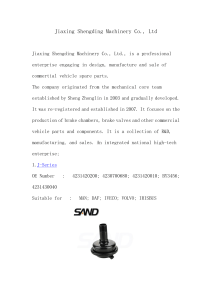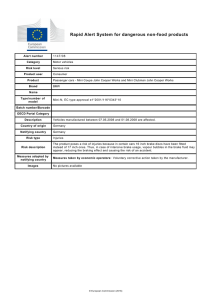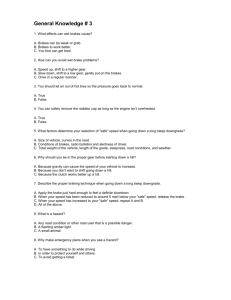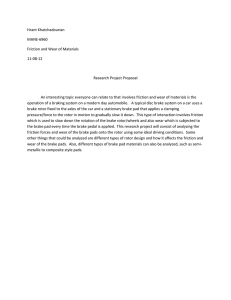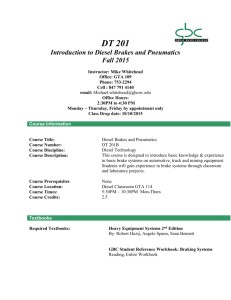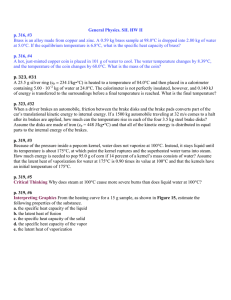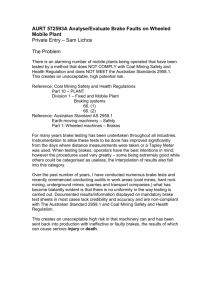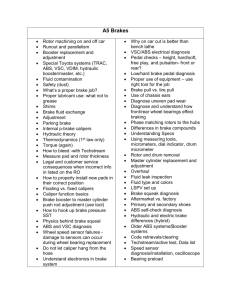Cambridge Technicals in Engineering Maximum Power
advertisement
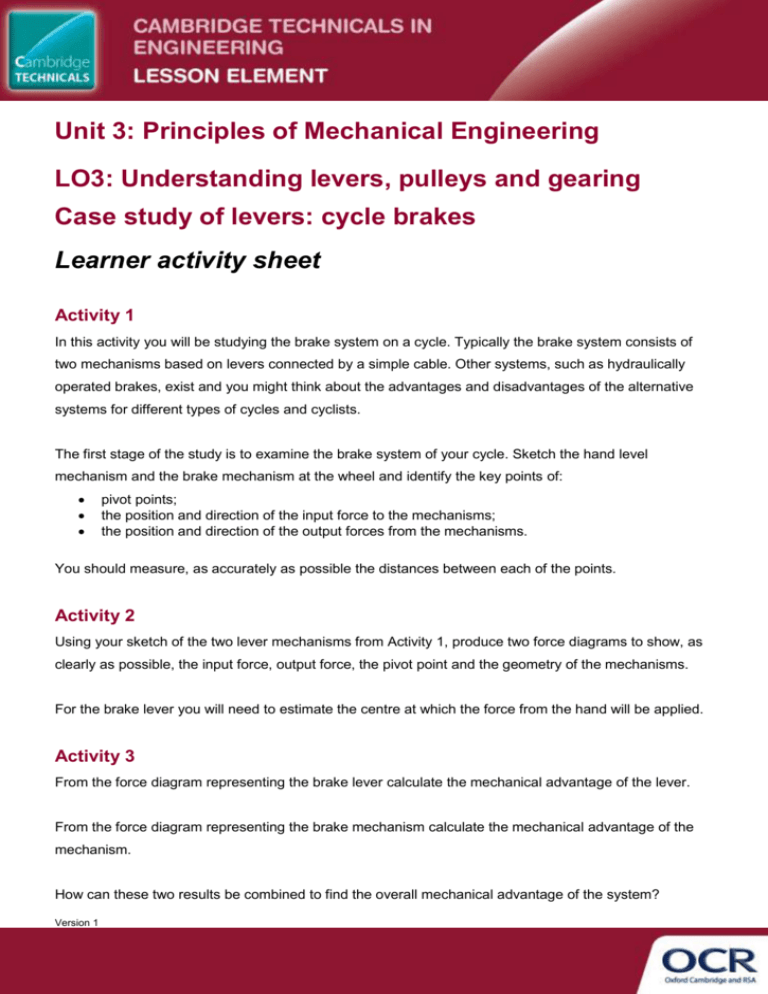
Unit 3: Principles of Mechanical Engineering LO3: Understanding levers, pulleys and gearing Case study of levers: cycle brakes Learner activity sheet Activity 1 In this activity you will be studying the brake system on a cycle. Typically the brake system consists of two mechanisms based on levers connected by a simple cable. Other systems, such as hydraulically operated brakes, exist and you might think about the advantages and disadvantages of the alternative systems for different types of cycles and cyclists. The first stage of the study is to examine the brake system of your cycle. Sketch the hand level mechanism and the brake mechanism at the wheel and identify the key points of: pivot points; the position and direction of the input force to the mechanisms; the position and direction of the output forces from the mechanisms. You should measure, as accurately as possible the distances between each of the points. Activity 2 Using your sketch of the two lever mechanisms from Activity 1, produce two force diagrams to show, as clearly as possible, the input force, output force, the pivot point and the geometry of the mechanisms. For the brake lever you will need to estimate the centre at which the force from the hand will be applied. Activity 3 From the force diagram representing the brake lever calculate the mechanical advantage of the lever. From the force diagram representing the brake mechanism calculate the mechanical advantage of the mechanism. How can these two results be combined to find the overall mechanical advantage of the system? Version 1 Activity 4 How can the accuracy of the results found in Activity 3 be verified? What measurements would need to be taken to do this? What equipment would be needed? It might be useful to remember that the mechanical advantage of any system is the inverse of the velocity ration of that system, i.e. M.A.= 1/V.R. Why might the theoretical mechanical advantage calculated in Activity 3 be higher than that achieved in practice? What can be done to ensure that the mechanical advantage achieved in practice is as close as possible to the theoretical mechanical advantage? Version 1
